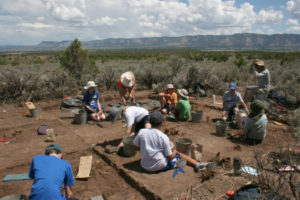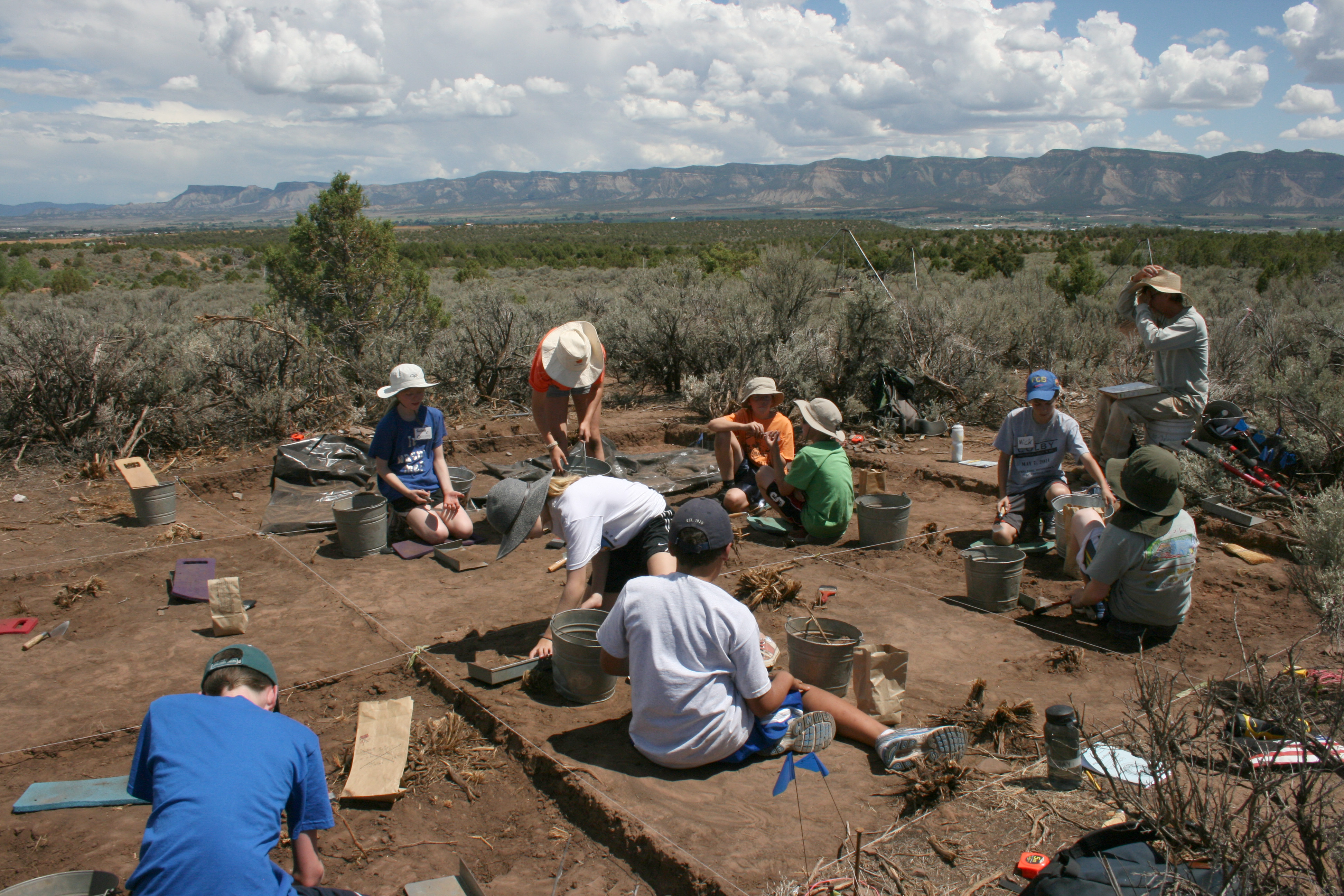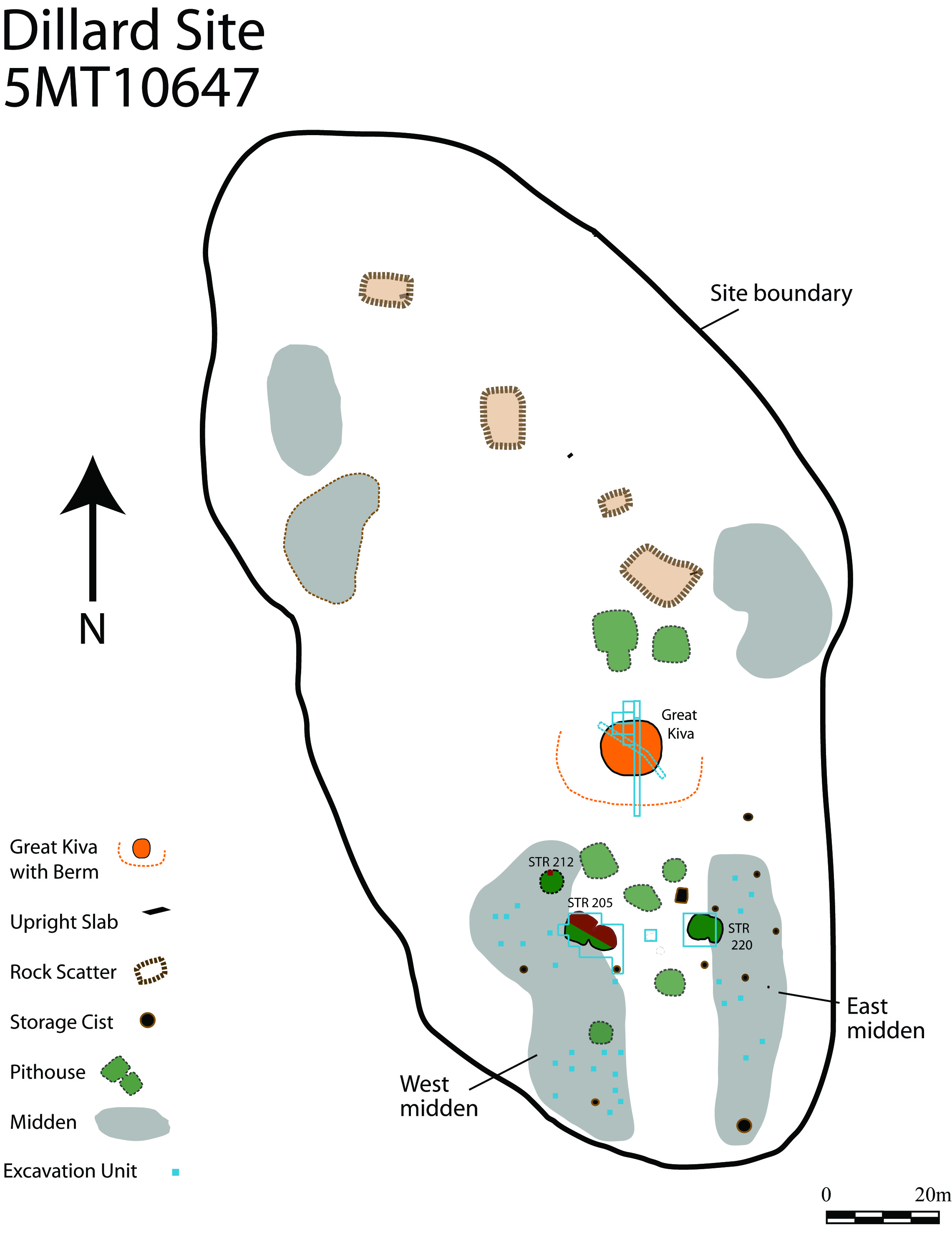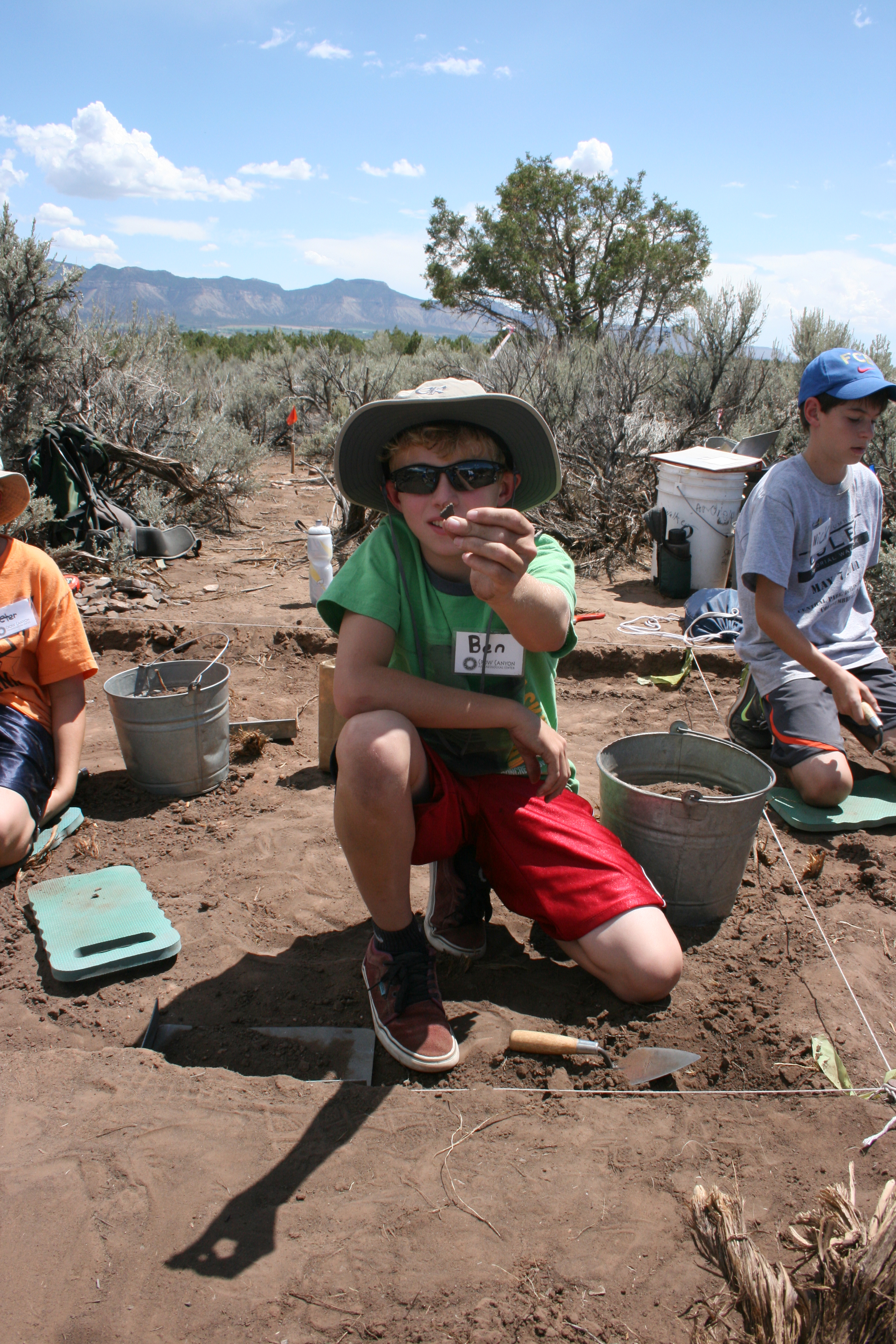
For years, many Southwestern archaeologists working in the central Mesa Verde (Colorado) region of North America, including those at the Crow Canyon Archaeological Center, have concentrated their research on the late thirteenth century A.D.—the end of ancestral Pueblo occupation in the area. This focus is understandable: learning about the abrupt depopulation of this region of North America can add to our knowledge of the complex interactions between humans and their environment. Unfortunately, however, this focus on the late thirteenth century has resulted in an unclear understanding of how Pueblo society formed here in the first place.
Long before the iconic cliff dwellings at Mesa Verde National Park were built, early Pueblo people were establishing a foothold throughout the Mesa Verde region. The time was the Basketmaker III period, which archaeologists date from about A.D. 500 to 750. It is clear that the period was a pivotal time in Pueblo history, with large population growth and the introduction of pottery, the bow and arrow, and cultivated beans. But many questions remained unanswered. Where did the population of the Mesa Verde region come from? How many people settled in the region and what role did population growth play in the formation of their society? How did they create communities? What was their impact on the environment?
This year, Crow Canyon embarked on a new research project, the Basketmaker Communities Project, at a site which may hold answers to these questions. Called the Dillard site, it is a ceremonial center dating from the 7th century A.D. and is located just a few miles from the Center’s campus in southwestern Colorado.
The Dillard site includes a “great kiva” (a room used by Pueblo Indians for ceremonies or other public events) measuring 10 meters in diameter and 1 meter deep, and at least several smaller structures called “pithouses” (a dwelling dug into the ground). Test excavations revealed the kiva to be one of the oldest public buildings in the Mesa Verde region. The site was first recorded during a survey in 1991 by Woods Canyon Archaeological Consultants (WCAC) preliminary to the construction of a private residential community. That survey also revealed evidence of more than 120 other pithouses surrounding the core Dillard site, making the Dillard site and surrounding area one of the largest clusters of remains from this time period.
This year, during the first season at the Dillard site, Crow Canyon archaeologists were joined by more than a thousand students participating in school group programs, 73 teens taking part in camps, nearly 100 adults engaging in archaeology programs, and four higher education students serving as interns.

Excavations revealed some surprising finds and a wealth of data. Shanna Diederichs, supervisory archaeologist for the project, said: “This has been a fantastic year. Not only does the discovery of numerous habitation structures at the Dillard site suggest that we may have an early village on our hands, but this discovery would not have been possible without the help of so many great folks attending our research programs.”
The 2011 Field Season
Evidence of Masonry at the Great Kiva
At the great kiva, Crow Canyon archaeologists uncovered evidence of stone-and-mortar masonry that seems to have formed the upper wall of this large structure. This masonry now appears as a jumble of large unshaped sandstone rocks in a pinkish beige clay. The discovery is truly surprising because wet-laid, stacked masonry construction is almost unheard of in ancestral Pueblo sites until approximately A.D. 850, or 200 years later than the Dillard site. It’s a little premature to think about rewriting the textbooks, but suffice to say, we’re very excited about this find!
By the end of the field season, this masonry was exposed across the entire northwest quadrant of the great kiva (see map below for locations of all structures). This is a huge accomplishment, given the size of the structure. Another portion of this same collapsed wall was exposed in a 1-meter-wide trench at the southern end of the great kiva. Excavation in the trench exposed up to six courses of stone that had fallen into nearly the center of the structure, 4 meters away. Some of the stones are about 80 centimeters wide and would have required the effort of more than one person to carry them to the site. We are currently mapping each individual stone and recording its angle of repose.
______________________________________________________________________________________________________________________

_____________________________________________________________________________________________________________________
Life In and Around a Pithouse
Much progress was also made in Structure 205, a burned pithouse. Excavators reached the floor in this structure in very small exploratory test pits; otherwise, both the antechamber and main chamber of this pithouse were excavated to just 10 centimeters above the floor.
In this structure, Crow Canyon archaeologists and program participants excavated through layers of collapsed roof and wall material consisting of a combination of dense, caliche-streaked clay, charcoal fragments, and a few shaped stones. Interestingly, four pieces of animal bone awls were recovered from this material, suggesting that awls may have been stashed in the rafters of the pithouse when it was abandoned. To ascertain when the structure was built, we hope to collect burned timbers from the collapsed roof for tree-ring dating.
Excavations in areas surrounding this pithouse are beginning to help us understand the kinds of activities that were conducted outside of pithouses. A dense concentration of more than 200 gray ware sherds (some of them only lightly fired), a quartz crystal, and several pieces of hematite pigment and animal bone were found just north of the pithouse, suggesting that this may have been a favored outdoor work spot.
Excavators also found an area of compact, discolored soil east of the antechamber that may indicate a ramped entryway into the antechamber of the pithouse. Few doorways have been documented for Basketmaker III pithouses in the Mesa Verde region, so if this proves to be an entryway, researchers may have to reconsider their assumptions about roof entry into these structures.
A Surprise Find in a Midden
Of course, any excavation would not be complete without a surprise. In early October, a field intern was directed to finish off a 1-x-1-meter test unit in the “west midden,” located south of the great kiva (a midden is a concentration of refuse). At the base of the midden deposits, she did not find the expected bright red, culturally “sterile” silt that underlies the entire site. Instead, the sediment began to look more and more like structure fill, with clumps of clay and charcoal flecking. Sure enough, at 50 centimeters below the modern ground surface, she exposed the floor of a previously unaccounted-for pithouse, now referred to as Structure 212. There were no artifacts sitting directly on the surface—just ash and construction slabs. This discovery brings the count of probable pithouses at the Dillard site to 10 and pushes the site into the category of a small village.
As Crow Canyon said farewell to the season’s last program participants, blue skies gave way to a few days of much-needed rain rolling in from the west (for an incredible rainbow photo, see Crow Canyon’s Facebook page). It was a beautiful month highlighted by cottonwoods turning auburn and gold—a fitting end to the first year of the Basketmaker Communities Project.
Public Participation in the Basketmaker Communities Project
Only approximately 2 percent of human history has taken place since the advent of writing. Archaeology is the key to learning about the other 98 percent! Crow Canyon’s research brings to light the histories of peoples whose past would be otherwise unknown and helps us understand issues relevant to people today such as cultural diversity, human-environment interactions, and cultural change and continuity.
The public is encouraged to make a lasting contribution to archaeology and to the understanding of the Basketmaker III period by joining the Crow Canyon Archaeological Center for an archaeology program. At Crow Canyon, adults, families, educators, and students have the opportunity to work side-by-side with Crow Canyon archaeologists and educators in the field and lab, investigating this pivotal time in Pueblo history.
For more information about the Crow Canyon Archaeological Center and its archaeology programs for the public, visit www.crowcanyon.org or call 800-422-8975.
 _________________________________________________
_________________________________________________
Photos courtesy Crow Canyon Archaeological Center



